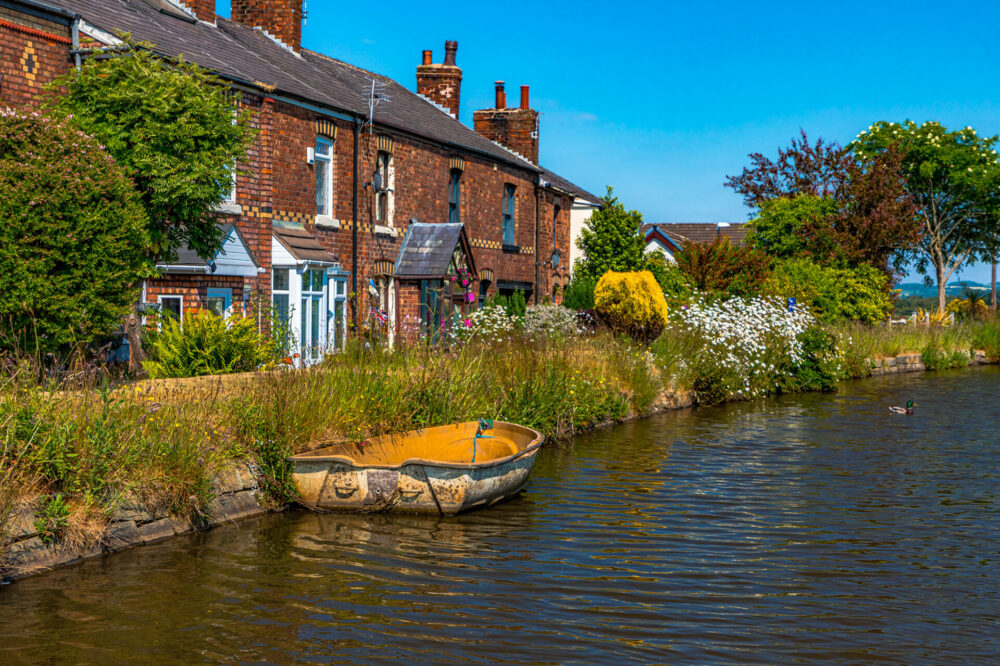Making Sense of the Locks That Lift and Lower Your Narrowboat
If you’re new to canal boating, the idea of steering a boat into a big chamber, closing gates behind you, and moving up or down in the water can sound a bit daunting. But don’t worry — canal locks are clever, simple pieces of engineering that have been working the same way for over 200 years.
Here’s an easy-to-understand guide to how canal locks work — and what you can expect when you use one on your canal boat holiday.
🧱 What Is a Canal Lock?
A lock is a watertight chamber with gates at both ends, designed to raise or lower a boat between different water levels on a canal. They’re essential on sloping terrain and are found throughout the UK’s inland waterways.
🛠️ The Basic Principles (Simplified)
A canal lock uses gravity and water flow to move your boat up or down:
- When going uphill, the lock fills with water to lift the boat.
- When going downhill, the lock empties to lower the boat.
No motors or pumps are needed — just some clever gatework and paddles.
🔁 Step-by-Step: How to Use a Canal Lock
Here’s how it works in practice:
1. Approach Slowly
Cruise up to the lock and check if it’s full or empty. You may need to wait if someone else is using it.
2. Set the Lock
- If you’re going uphill and the lock is empty — you’re ready.
- If it’s full and you’re going uphill, you’ll need to empty it first (and vice versa when going downhill).
You do this by opening the paddles — mechanisms that let water in or out of the lock.
3. Open the Gates
Once the water level inside the lock matches your boat’s level, open the gates and slowly steer your boat in.
4. Close the Gates Behind You
Shut the lock gates to seal the chamber before adjusting the water level.
5. Adjust the Water Level
Open the top paddles (if going up) or bottom paddles (if going down) gradually.
- Water will rush in or out, and the boat will rise or fall.
- Hold onto the ropes or keep the boat steady with your engine if needed.
6. Open the Opposite Gates and Cruise Out
Once the water inside the lock matches the next level, open the gate, cruise out slowly — and close everything behind you if no one’s waiting.
⚠️ Safety Tips for Lock Use
- Never jump across lock gates
- Keep fingers clear of ropes and moving parts
- Don’t open paddles too quickly — the water can rush violently
- Always have someone on the bank helping if you’re new
- Watch your boat’s position to avoid scraping the walls
🧠 Fun Fact: Who Built the Locks?
Most UK locks were built in the 18th and 19th centuries by hand, using simple tools and thousands of labourers called navvies. Their work helped power Britain’s Industrial Revolution.
📍 Types of Locks You Might See
- Single Locks – One boat wide
- Double Locks – Two boats wide, used on wider canals
- Staircase Locks – A series of locks directly connected
- Electric or Automated Locks – Rare, but some exist on modernised canals
🚤 Final Thoughts
While the first few locks may feel a bit tricky, they quickly become second nature. They’re also one of the most enjoyable parts of a canal trip — offering a chance to work together, meet other boaters, and appreciate the simple brilliance of old-school engineering.
So don’t fear the locks — embrace them! They’re all part of the canal boat holiday experience.
Planning your first lock adventure?
We’ll give you hands-on guidance during your boat handover so you feel confident before cruising out. Our beginner-friendly routes also feature easy locks to get you started.


